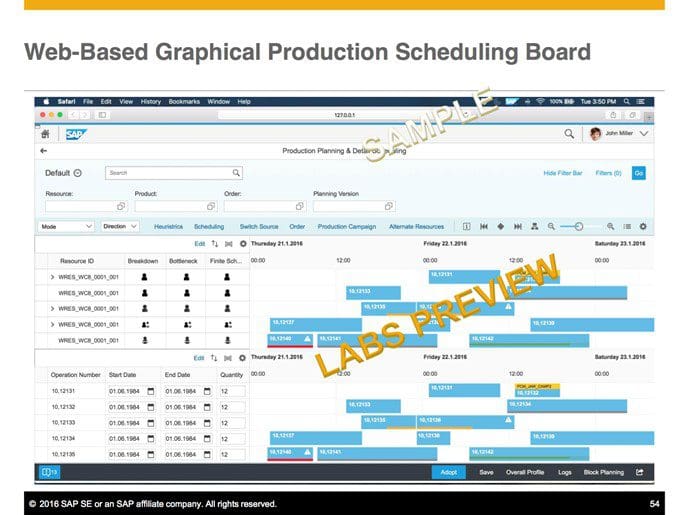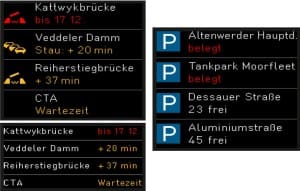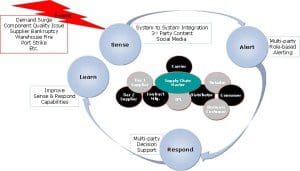Robots running amuck is a common theme in science fiction.
When it comes to autonomous mobile robots (AMRs) in warehouses, the concern is more prosaic. There needs to be a layer of software that allows the robots to work optimally with people and other material handling systems.
In modern warehouses, the central software is a warehouse management system (WMS). WMS has the order logic; it understands what inventory is coming into the warehouse and needs to be put away, and what specific goods need to be picked and shipped out. It has also had logic that makes sure humans are moving efficiently through the warehouse. And the WMS understands where the specific products are stored in the warehouse.
Warehouse control systems contain material handling ACTION logic. The warehouse management system tells the WCS what needs to be picked from a specific location and moved to another destination. The WCS does not need to understand what the items are or how they fulfill specific orders, it just needs to ensure that goods move from a specific starting location to a specific destination. The warehouse control system also has logic to make sure the material handling systems are running optimally; that conveyors, for example, don’t have too many goods being inducted onto them which could cause log jams at downstream ejection locations.
The material handling systems in turn have a thin layer of machine control that acquires data from the machine, makes sure that a specific machine is operating in normal parameters, and signals when the machine needs maintenance.
Now the trick is to make sure that all these different systems operate efficiently together to optimize the operations of the entire warehouse. Thus, for example, it does no good to have more goods arriving on a conveyor at pack stations than workers can handle; the goods from the conveyor need to be efficiently throttled to handle the speed at which the humans are putting goods into cartons and labeling those cartons.
But autonomous mobile robots create problems for traditional warehouse control systems. Traditional material handling is bolted down, AMRs move about.
Experts in logistics technology have a wide variety of opinions on the best way to globally optimize a warehouse utilizing mobile robots.
Matt Butler, Director of Solutions Strategy at JDA Software, argues that AMRs can be efficiently managed by the WMS. “People’s work is throttled by a WMS.” Mr. Butler explains, a robot or Automatic Guided Vehicle (AGV) is no different than a typical user; you can control it through a directed work task queue just like you would a human. This task queue knows source and destination locations, and work gets routed to users (human or robotic) based on permissions, priority, and proximity of the work to be performed. Mr. Butler views controlling high speed sortation as being a type of automation where a better argument can be made for control at the warehouse control level.
SAP offers both WMS and WCS. Markus Rosemann, the Head of the Supply Chain Execution Line of Business at SAP agrees that the level of control for robots does not need to be as tight as for other forms of automation. “There is more intelligence in the devices” and instructions similar to what humans are given can be used. But a total solution “still requires a granular level of flow control” across a variety of material handling technologies.
Bernd Stöger, the Product Manager for Knapp’s Software line, has a different perspective. Autonomous robots or shuttles need a layer of fleet management logic. “The fleet management knows where each of those shuttles are, the battery load, whether the container on the shuttle is loaded at that moment, and its target location.” Fleet management is a module within Knapp’s KiSoft software suite.
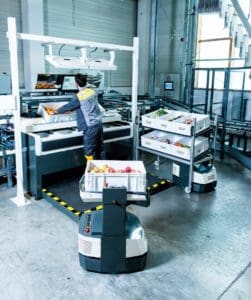
Man Robot Interaction with the Knapp Open Shuttle
For all the material handling solutions and the humans in a warehouse to operate effectively together, “there needs to be clear layering and modular software” Mr. Stöger said. Knapp, an Austrian company that offers both material handling solutions, including robots, and warehouse management software, has this architecture. “We can integrate to any new robot or even drones. We could do it in a couple of days to a couple of weeks depending on the device.” This same abstraction layering, Mr. Stöger asserted, is also important to support Internet of Things (IoT) capabilities.
The use of autonomous mobile robots in warehouses is set to explode. The question of how best to manage those robots won’t go away any time soon.
ARC recently completed a study of the global warehouse management system market, the increased importance of automation to serve e-fulfillment warehouses is key theme that emerged in the study.
















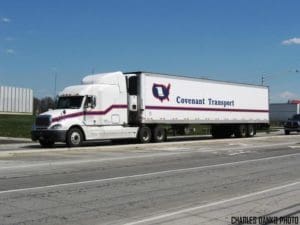
 Several providers of transportation management systems (TMS) have invested in the user experience (UX). These suppliers have worked to improve both the ease of use, the intuitiveness of solution, and the ability of power users to do their work efficiently, for example, without having to have multiple screens open. In TMS, that means a focus in particular on the role of the dispatcher. TMS solutions have added a Google Maps look and feel to the dispatcher landing page, and most TMS solutions have drag and drop to allow dispatchers to drag loads from one truck to another, or a driver from one load to another, and then have the plan automatically update itself.
Several providers of transportation management systems (TMS) have invested in the user experience (UX). These suppliers have worked to improve both the ease of use, the intuitiveness of solution, and the ability of power users to do their work efficiently, for example, without having to have multiple screens open. In TMS, that means a focus in particular on the role of the dispatcher. TMS solutions have added a Google Maps look and feel to the dispatcher landing page, and most TMS solutions have drag and drop to allow dispatchers to drag loads from one truck to another, or a driver from one load to another, and then have the plan automatically update itself.